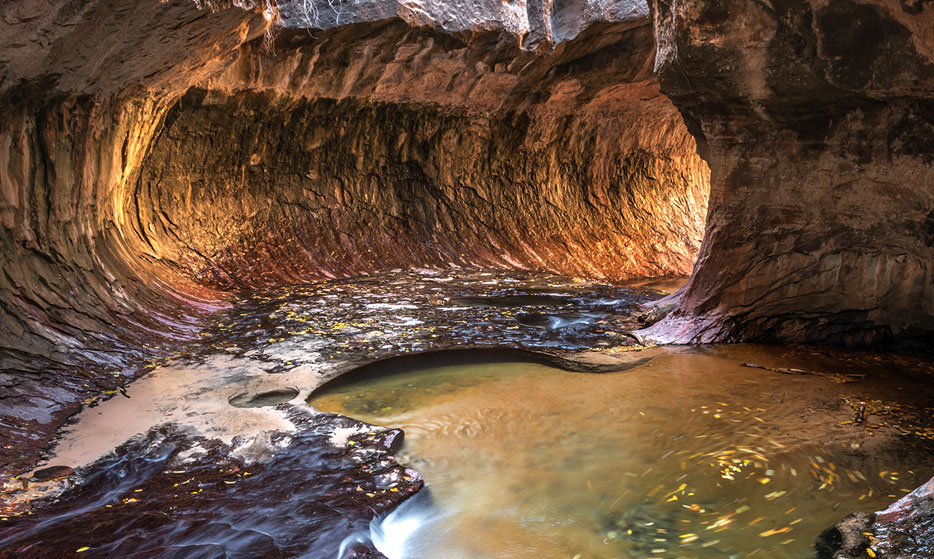One Shot: Are We There Yet?
A photo destination well worth the effort
Walk through the horizontal slot canyon known as The Subway, on the left fork of North Creek in Zion National Park, Utah. Stand up on the rock ledge and turn around. If it's a sunny day, you'll see a scene similar to what you see here, as reflected sunlight pours through the tunnel-like canyon from the V-shaped valley at The Subway's entrance.
One of the reasons The Subway is a favorite location for photographers is that the flood of light through the passageway isn't dependent on sunrise, sunset or any particular angle of the sun. "The light effect peaks for a few hours around mid-day," says Gary Crabbe, who made this photograph shortly after 1:00 p.m. in November, 2013. "There's a three- to four-hour window; but noon to two is the best time," he adds. Gary also notes that November is a particularly good time to visit: not only is there the benefit of colorful fall leaves in the creek, but it's also the time of year when most of the summer thunderstorms are over and done. (If you happen to hit an overcast day, you'll still be rewarded by light through the tunnel, but it'll be pale sunlight rather than a golden glow.)
To make the most of your Subway photo opportunity, you'll want to have a wide-angle lens because the space is pretty tight. Like Gary, you might go for a long exposure to slow the movement of the creek water. A small f/stop will provide good depth-of-field. Also like Gary, you'll likely want to do a lot of shooting and a lot of bracketing to be sure you get the winners you came for, because getting to The Subway is no walk in the park.
There are two ways in. The Bottom Up route, a nine-mile roundtrip hike that involves, in the words of the National Park Service, "route finding, creek crossing, and scrambling over boulders," is the easier way. The Top Down route, says the Park service, "is a strenuous 9.5-mile hike that requires rappelling skills, 60 feet of rope, and extensive route finding experience [as well as] swimming through several deep pools of very cold debris-filled water."
Very cold? Debris-filled? Okay, then. With the Top Down Route sounding like something best enjoyed by extreme canyoneering adventurers, Gary chose the easier way and arrived at The Subway with a full kit of gear and some pretty clear ideas of what he wanted to capture. His shutter speed choices were aimed at getting some blur to the water, but not a silky smooth look. "I wanted to show some movement but still preserve definition," he says. And to maintain the depth of field he needed to get a level of sharpness on those leaf bits at the bottom of the frame, bracketing exposures by changing shutter speeds was the way to go.
With his tripod set up on the rock ledge, he took a number of horizontal and vertical shots, zoomed in and out and changed framing and composition. "You want to get some great shots during the time you spend," Gary says, and the location gives a lot more than just light through the tunnel: note the leading line of the curve of the ledge; the variety of textures and tones; and how the blue sky reflecting on the rock ledge contrasts the warmth of the sand and silt below the creek.
Travel plans: visit the National Park Service website, where you can find out about the reservations and permits required for a visit to The Subway.
Keep in mind: Comfortable hiking boots, much bracketing.
The specs: D800, AF-S Zoom-NIKKOR 17-35mm f/2.8D IF-ED, 2.5 seconds, f/13, ISO 100, manual exposure, Matrix metering.






